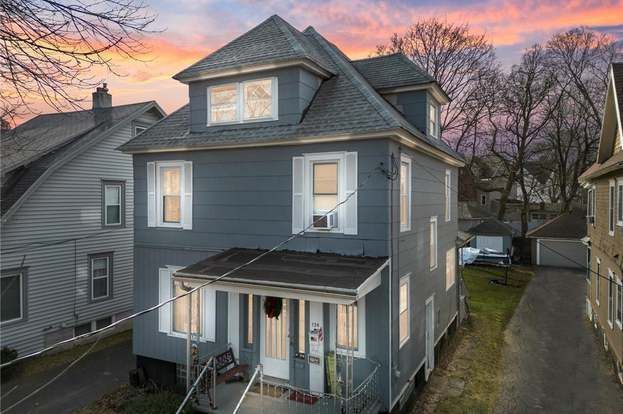Report on Cranbury Township Farm Lawsuit and Sustainable Development Goals Considerations
Introduction
A legal dispute has arisen in Cranbury Township involving the Henry Realty Company, owners of a historic 175-year-old family farm, and township officials seeking to acquire the property for affordable housing development. This report outlines the key issues of the lawsuit, the township’s affordable housing plan, and the implications for Sustainable Development Goals (SDGs).
Background of the Dispute
- The Henry Realty Company, representing Andy and Christopher Henry, filed a lawsuit in Middlesex County Superior Court contesting the township’s plan to acquire their family farm located on South River Road.
- The lawsuit challenges the Township Committee’s decision to pursue possible condemnation of the farm, which has been in the Henry family since 1850.
- Legal arguments include claims that the use of eminent domain for affordable housing violates state law and constitutional provisions, and that the township improperly delegated authority to a private developer, the Walters Group.
- The lawsuit also asserts that the township’s affordable housing plan conflicts with Cranbury’s Master Plan.
Farm and Community Significance
- The Henry Farm spans 21 acres and includes a historic home and outbuildings, leased to a tenant raising cattle and sheep.
- The farm is recognized as a valued part of Cranbury’s agricultural heritage and community identity, with families visiting to see farm animals.
- The Henry family aims to preserve the farm as a productive agricultural enterprise and maintain its legacy for future generations.
Township’s Affordable Housing Plan
- The township’s plan aims to meet a state-mandated obligation to provide zoning for 265 affordable housing units over the next decade.
- The Henry Farm site is proposed for development of 130 affordable apartments, to be managed in partnership with the Walters Group, a private developer specializing in affordable and market-rate housing.
- The Township Committee approved an ordinance to acquire the farm and an additional lot for affordable housing despite opposition from some residents.
Legal and Community Concerns
- The lawsuit argues that eminent domain is being used unconstitutionally for a private development rather than a public use.
- Opponents highlight the farm’s location across Route 130 from Cranbury’s downtown, raising concerns about accessibility and community integration.
- A community-led GoFundMe campaign has raised substantial funds to support the preservation of the farm.
Implications for Sustainable Development Goals (SDGs)
This case intersects with several SDGs, emphasizing the need for balanced development that respects social, economic, and environmental dimensions:
SDG 11: Sustainable Cities and Communities
- The township’s affordable housing initiative aligns with SDG 11’s target to provide adequate, safe, and affordable housing.
- However, the controversy highlights challenges in ensuring inclusive urban development that preserves cultural heritage and community identity.
SDG 15: Life on Land
- Preservation of the Henry Farm supports the conservation of agricultural land and biodiversity, contributing to sustainable land use.
- The farm’s historic and ecological value underscores the importance of protecting rural landscapes amid urban expansion.
SDG 16: Peace, Justice, and Strong Institutions
- The legal dispute emphasizes the need for transparent, equitable governance in land use decisions and respect for property rights.
- Ensuring community participation and adherence to constitutional principles is critical for social justice and institutional trust.
SDG 1: No Poverty and SDG 10: Reduced Inequalities
- Affordable housing development aims to address social inequalities by providing housing options for lower-income residents.
- Balancing this goal with preservation of local heritage and community values is essential for inclusive and equitable growth.
Conclusion
The Cranbury Township case exemplifies the complex interplay between development goals and heritage conservation within the framework of the Sustainable Development Goals. It underscores the importance of integrating community values, legal frameworks, and sustainable urban planning to achieve balanced progress.
References
- Henry Realty Company lawsuit filings, Middlesex County Superior Court
- Cranbury Township Affordable Housing Plan documentation
- Community statements and public meeting records
- SDG framework and targets relevant to housing, land use, and governance
1. Sustainable Development Goals (SDGs) Addressed or Connected
- SDG 11: Sustainable Cities and Communities
- The article discusses affordable housing plans and urban development within Cranbury Township, directly relating to SDG 11’s goal of making cities inclusive, safe, resilient, and sustainable.
- SDG 15: Life on Land
- The preservation of a 175-year-old family farm and its legacy highlights concerns about protecting terrestrial ecosystems and sustainable land use, aligning with SDG 15.
- SDG 16: Peace, Justice, and Strong Institutions
- The lawsuit challenging the use of eminent domain and the legal process reflects issues of justice, rule of law, and governance, which are central to SDG 16.
2. Specific Targets Under Those SDGs Identified
- SDG 11: Sustainable Cities and Communities
- Target 11.1: Ensure access for all to adequate, safe, and affordable housing and basic services.
- Target 11.3: Enhance inclusive and sustainable urbanization and capacity for participatory, integrated, and sustainable human settlement planning and management.
- SDG 15: Life on Land
- Target 15.3: Combat desertification, restore degraded land and soil, including land affected by desertification, drought and floods, and strive to achieve a land degradation-neutral world.
- Target 15.9: Integrate ecosystem and biodiversity values into national and local planning, development processes, and poverty reduction strategies.
- SDG 16: Peace, Justice, and Strong Institutions
- Target 16.3: Promote the rule of law at the national and international levels and ensure equal access to justice for all.
- Target 16.6: Develop effective, accountable, and transparent institutions at all levels.
3. Indicators Mentioned or Implied to Measure Progress
- For SDG 11 (Affordable Housing)
- Indicator 11.1.1: Proportion of urban population living in slums, informal settlements, or inadequate housing – implied through the focus on affordable housing development.
- Indicator 11.3.1: Ratio of land consumption rate to population growth rate – implied by the discussion on land use changes from farm to housing development.
- For SDG 15 (Land Use and Ecosystem Preservation)
- Indicator 15.3.1: Proportion of land that is degraded over total land area – implied by concerns over converting farmland to housing.
- Indicator 15.9.1: Progress towards national targets established in accordance with Aichi Biodiversity Targets – implied by the farm’s historic and ecological value within the community.
- For SDG 16 (Justice and Governance)
- Indicator 16.3.2: Unsentenced detainees as a proportion of overall prison population – not directly mentioned but relates to justice system functioning.
- Indicator 16.6.2: Proportion of population satisfied with their last experience of public services – implied through community opposition and legal challenges reflecting governance issues.
4. Table of SDGs, Targets, and Indicators
| SDGs | Targets | Indicators |
|---|---|---|
| SDG 11: Sustainable Cities and Communities |
|
|
| SDG 15: Life on Land |
|
|
| SDG 16: Peace, Justice, and Strong Institutions |
|
|
Source: mycentraljersey.com







